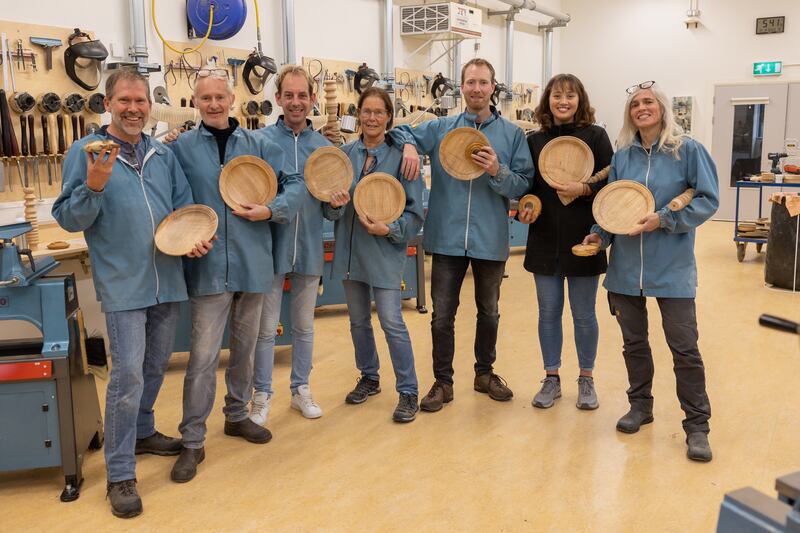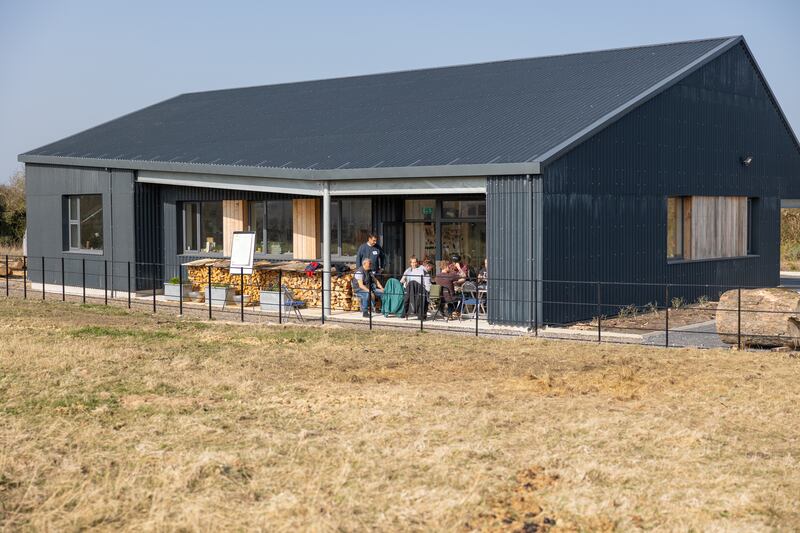Fascinated by the wonders of wood? Acclaimed woodturner Glenn Lucas has built his career on fallen trees.
Back in school, woodwork was what you did if you couldn’t manage applied maths. What am I missing?
Everything. It’s getting better, but for too long, the school system has judged people on how good they are at sums and spelling, and looked less at what they’re actually amazingly talented at. Glenn Lucas grew up on a farm in Co Carlow. “At 16 years of age I discovered what a woodturning lathe could do,” he says. He never looked back. Fortunately he adds, “I got a lot of encouragement from my teachers at Kilkenny College, who purchased my work on a frequent basis – I would display my finished work in the art room just outside their staff room.”
Sounds canny! What next?
Ireland is not short of craft fairs and festivals, particularly in Counties Carlow and Kilkenny, and Lucas followed that up with a business skills course from the Design and Crafts Council Ireland, which helped him into Irish, European and American markets, where they were hungry for his delicious salad bowls. He now shares his skills via online and in-person classes and courses, which have brought him around the world.
But is it terribly difficult? To turn tree trunks into delightful dishes, I mean…
According to Lucas, anyone can do it – with the right training. “It’s not an intuitive hobby, so it is easy to develop bad habits if self-taught,” he says. You also need some specialist equipment, such as a woodturning lathe, bowl and spindle gouges, chisels and scrapers, so you definitely do want to take a few classes before investing heavily in anything. Apart from the equipment, the essential skills are “patience, attention to detail, and you need to have an eye for design, and be safety conscious”.
READ MORE

I can be pretty patient. What can I make as a beginner?
“We start people off with a tea-light holder. This helps to learn basic tool use. Class participants get to bring home a beautiful object turned from Irish native wood that they have made themselves.” Get expert and you’ll be on to the intricacies of hollow-form vessels such as vases, where the inside has been hollowed out through a small opening at the top.
Anything to watch out for?
Lucas says it’s vital to learn to “Ride the bevel… It’s one of the most important things, to keep the sharp edges of the bevel in full contact with the wood as it turns on the lathe.” This leads to what, for Lucas, is the nicest part of the job: “the smell and feel of the wood, spending time in a workshop, and seeing a piece of wood [that was] destined for the fire given a new life as a beautiful object – a piece for the home that can last for centuries.”

That’s got me thinking, where do you get your materials? Do you have go and cut down trees?
Quite the opposite. Lucas is always on the look out, and says his phone starts ringing after a storm. With a modified trailer, he’ll drive out – up to an hour from home, and is particularly delighted by hardwoods: ash, beech, sycamore and oak. “If I can get Irish walnut, I am very pleased.”
Classes with Glenn Lucas start at €210. Find out more at glennlucaswoodturning.com, where you can also explore specialist tools, find instructional videos, or simply buy a beautiful bowl.















